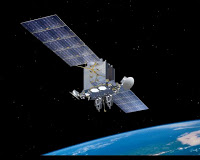Activist Post
The latest announcement that the Pentagon’s military research division, DARPA (Defense Advanced Research Projects Agency), has created shape-shifting robots sounds like another Terminator sequel, but this is mainstream news. Sure, this is still theoretical, as these robots are just half a millimeter thick, but it portends a future where, “it will be used to create full-sized cars and aircraft that morph as they move, or robots that can ‘flow’ like mercury into small openings, or multipurpose military uniforms that can adapt to different environments.” There is no discussion in the article about the benefits to mankind, only the military applications.
Whether or not the categories listed below were conceived of by individuals who had a desire to contribute to Humanity’s progress, the fact remains that between 45%-90% of American taxpayer money now goes to military spending. The U.S. has set the stage, but many other governments certainly have received their marching orders. The relationship between the foreign battlefield and civilian life at home can be traced back to the advent of world wars, as private research and development was often subsumed into the military mission. In our modern era of perpetual war on nebulous terror, it might be worthwhile to ask: Is our support of military spending helping humanity or enslaving us?
Surveillance — Spy technology was naturally a military creation. One could certainly argue that every country has real enemies, and it would be profoundly naive not to conduct surveillance against potential saboteurs. However, the citizens of the world who have paid the bill for this technology have clearly had it turned upon us. The ways we are being tracked, traced, and databased certainly makes it seem like we the people are the enemy.
Communications — High-tech surveillance is at its core pure communications. The military enhanced telephone, radio and TV technologies long ago. A joint working relationship with communications companies led to the eyes in the skies of satellite technology, which initially was designed to communicate with military units. It eventually had wide applications in the early space program. Radar is ubiquitous; another military application. And, yes, the Internet was conceived in a DARPA think-tank; it became a vehicle for secure communications between universities and military research sites in the early ’60s. Since then, the Internet has positively affected the lives of billions of people, offering freedom to communicate to anyone, anywhere in the world. However, the new Cybersecurity Act calls for government oversight of not only the infrastructure, but of citizen-created content as well (noted in the bill as “data”).
Transportation — The military academy, West Point, was the first engineering school in the United States. It was denounced early on as being incompatible with democracy, as its graduates became key civil engineers and educators in every part of society. Those four-lane highways that we all love, as we cruise down them in cars that have come to signify American independence, were created by an Eisenhower directive in 1956 to accommodate military transport and escape from atomic attack. Naval passage has had wonderful uses, but funding by taxpayers has still led to “stealth, speed, and firepower” as an enduring submarine slogan. The first practical helicopters were used by the Germans in WWII. The Wright Brothers are American legends, but they had their military connections as well. We need only to compare the flight technology used in commercial travel vs. what was announced the other day by the British military: Taranis. Taranis (pronounced: Tyrannis, of course) is an unmanned stealth fighter that can hit any continent in the world and, “is built to carry out intelligence, surveillance and reconnaissance on enemy territory using onboard sensors.” The cost is £143 million during the worst economic crisis of modern times.
Science — Scientific research has always been the thread that binds all of the disciplines of modern warfare. The history is a byzantine one, but had its official origins in the Council of National Defense, 1916, which coordinated industry for national defense. This mindset led eventually to The Office of Scientific Research and Development in 1941. Vannevar Bush, the director of The Carnegie Institution at the time, was bothered by the “lack of cooperation between civilian scientists and the military.” He was an early computer genius, a proponent of technocracy, and he advocated a system of connectedness called The Memex that was an absolute blueprint for the functions of the Internet that we see today. In short, a scientific dictatorship has been imagined, beta tested, improved upon again, and activated. Consider this quote from Bush in 1945:
– Vannevar Bush; As We May Think; Atlantic Monthly; July 1945.
This is how behind the times we are as recipients of information from the elite circles. Perhaps, when we hear that terrahertz surveillance blimps are hovering above us; or that nanotech particles can control our minds from a distance; or there is a military-UFO connection in China; or weather modification arrays can ignite the atmosphere, we might do well not to immediately laugh at such “crazy” claims, but to investigate them.
Do we in fact have a military-industrial complex today? This list of companies fulfilling military contracts certainly is indicative. Maybe the question shouldn’t be: Is military spending enslaving us, but are we enslaving ourselves when we support the concept of war itself?




